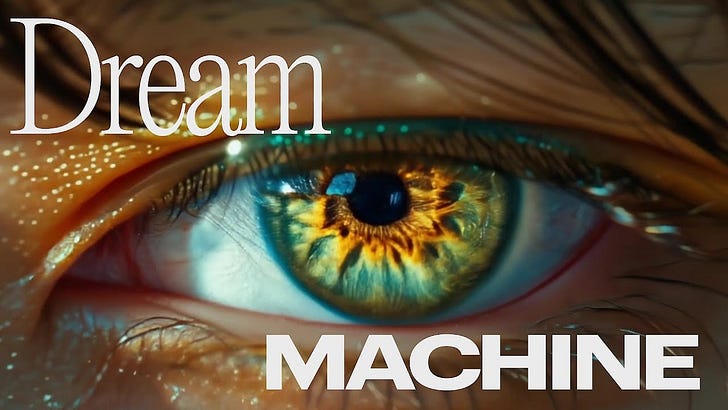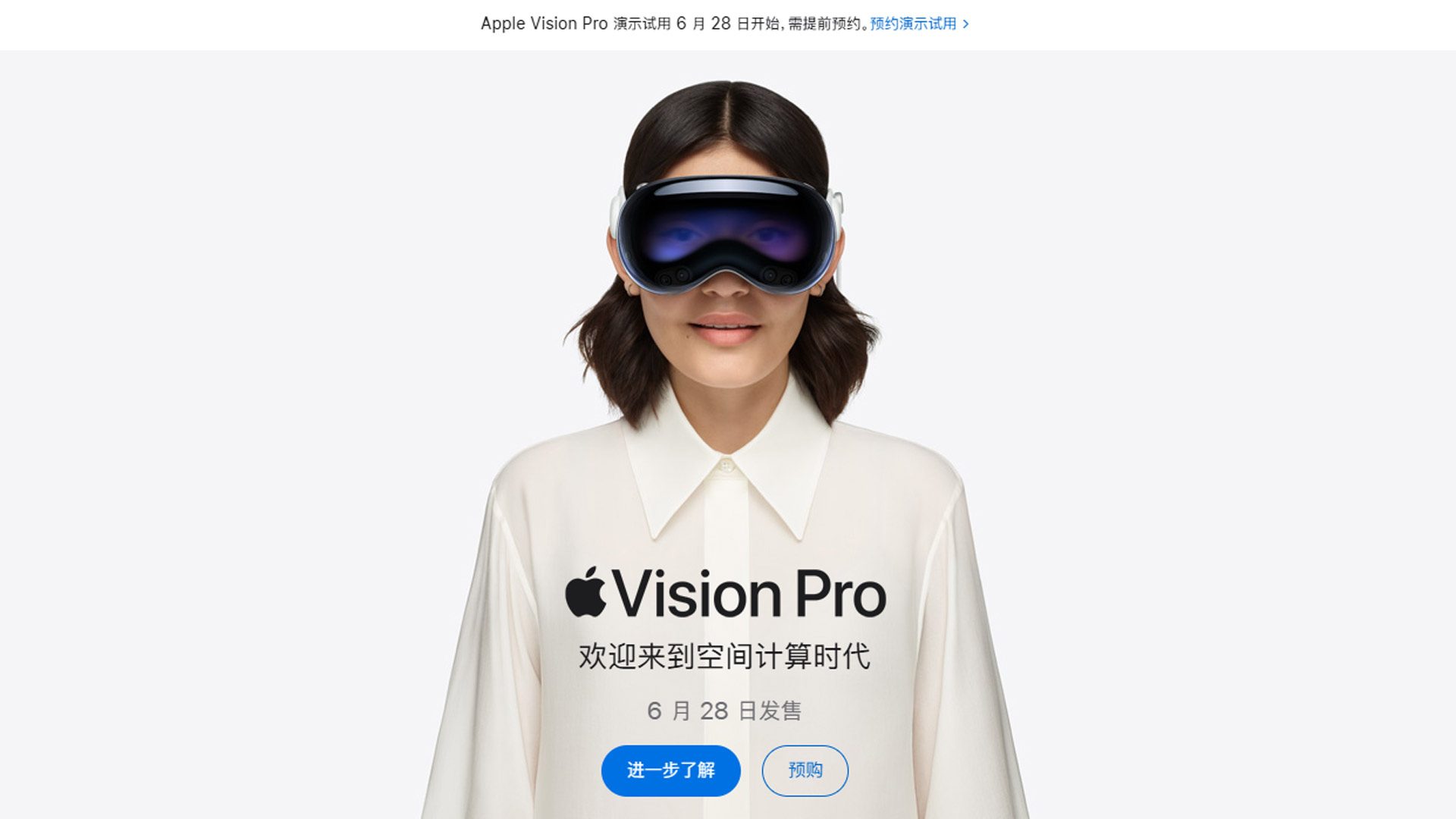- Magic Beans
- Posts
- Is Apple Immersive Video the future of entertainment?
Is Apple Immersive Video the future of entertainment?
Groundbreaking updates from WWDC 2024

Is Apple Immersive Video the future of entertainment? Groundbreaking updates from WWDC 2024
Apple Immersive Video is going to change how we experience content forever.
Hey everyone, it’s Cosmo, and welcome back to Magic Beans! This week, we’re diving into the groundbreaking news in the world of entertainment from WWDC:
So, what exactly is Apple Immersive Video? Essentially, it’s 180-degree 8K recordings that transport you right into the middle of the action. Now, you might be thinking, “Isn’t this just VR180, the format Google was pushing back in 2017?” Well, yes and no. The key difference now is the incredible quality.
Thanks to higher resolution cameras and superior micro-OLED displays, the quality of Apple Immersive Video is on another level. And with an accessible distribution platform like Apple TV+, you’re guaranteed top-notch content every time.
About a week ago at WWDC, Apple made several exciting announcements about Apple Immersive Video that you need to know about. They’re opening the doors for more creators to easily produce content in this format, and they’ve teamed up with Blackmagic on a new workflow involving their cameras, Davinci Resolve, and Compressor.
Let’s start with the Blackmagic URSA Cine Immersive camera. This thing is a beast: it offers 8K resolution per eye, 16 stops of dynamic range, and can shoot at 90 frames per second. It records into a file called Blackmagic RAW Immersive, which maps, calibrates, and stores positional lens data per eye in a single file.
Then there’s Davinci Resolve, which is now the first immersive video editor. You’ll be able to adjust and monitor your content directly in Vision Pro itself. This means you get real-time feedback on how your immersive videos will look, making the editing process more intuitive and accurate.
On top of that, Apple TV+ is rolling out new immersive content like an extreme sports series with Redbull, music from The Weeknd, and the first scripted short film called Submerged.
Canon also introduced a new lens, the RF-S 3.9mm f/3.5 STM lens exclusively compatible with the R7. This lens adds to their dual fisheye lens lineup – the RF-S 5.2mm. By comparison, this new lens is more affordable, offers auto-focus, a rear filter holder, and sharper center of the lens performance. For better or worse, the field of view is reduced from 190 to 144 degrees so you won’t see the tripod in your shots.
The Canon setup is far more accessible than the Blackmagic camera, making it a great option for creators at a lower price point. However, once viewers experience content made at 8K 90fps, it’s hard to see how 4K 30fps can compete. The difference in quality is significant, and viewers will come to expect the highest quality possible.
Finally, you’ll be able to edit spatial video in Final Cut Pro and view it in a new Vimeo app for visionOS.
The bottom line is that more people will be able to create Apple Immersive Video content. This opens up a whole new world of possibilities for creators and viewers alike. So get ready for a future with more immersive entertainment.
Magic Beans of the Week
We sure have come a long way from the days of the Will Smith spaghetti monster! Luma Labs has set a new bar for generative video with Dream Machine, their latest AI model comparable to OpenAI’s Sora.
I love how this democratizes storytelling and video creation, but it also hastens Reality Collapse. As the quality continues to improve, inevitably becoming indistinguishable from non-synthetic video, how will we know what’s real? AI generated imagery crossed this realism threshold somewhere around Midjourney 4 or 5, and realistic generative video has the potential to have an even larger impact on our ability to discern reality.
The CMR M-1 from 1stAveMachine combines the best of traditional movie production with cutting edge AI augmentation. It integrates a camera with generative AI filters controlled by physical knobs that transform video into otherworldly artistic creations.
The camera itself is quite beautiful, cleverly referencing the 16mm Cine-Kodak film camera that democratized film creation in the 1920s. This is not 1stAveMachine’s first innovative AI hardware – they built the 1st AI Machine, a device focused on creating animatics from storyboard images. The majority of new AI products are software focused, so I appreciate seeing creators find new ways to make AI tangible.
Apple Vision Pro goes international, arriving in mainland China, Hong Kong, Japan on June 28th, and in Australia, Canada, France, Germany, and the UK on July 12th. It’s release in China is notable, as Meta’s Quest platform (and social platforms like Facebook, Instagram, and WhatsApp) are blocked there.
As an American, it’s easy to forget Apple Vision Pro has only been available in the US since its launch in February. The wider availability is welcome news to catalyze the visionOS developer community.
3D movies are back, baby! Blackmagic has announced more details about their new in-development URSA Cine Immersive camera, referenced in Apple’s WWDC 24 keynote. This camera is BEEFY: 8k resolution per eye, 16 stops of dynamic range, and 90 fps recording.
A format previously exclusive to Apple’s in-house teams, this camera (along with new Final Cut Pro & Davicini Resolve support) is a significant milestone in the evolution of entertainment. After the industry’s failed attempts to popularize 3D movies and 360 video, Apple’s push into VR180 content checks several boxes that will finally make immersive video a medium with staying power:
Vision Pro’s ultra high resolution micro-OLED displays.
High quality camera tech, now opened up to filmmakers.
Apple TV+ is an easily accessible distribution platform.
A format that directors can more easily integrate into existing productions (i.e. 180 video is easier to adapt to than 360 video and more practical for storytelling).
Facing immense public blowback, Microsoft has delayed the full rollout of their new Recall feature, opting to initially make it available to members of the Windows Insider Program exclusively.
I actually like the idea of Recall; the ability to remember what I see and do on my computer sounds useful, but this was a PR nightmare waiting to happen. In a world where tech companies face heightened scrutiny about data privacy, the idea of my computer taking screenshots of everything I do was never going to go down well. This stands in contrast to Apple’s announcement of Apple Intelligence, where they have gone above and beyond to protect our privacy in an industry that often does not.
Thank you for reading. Till next week! 😊
Best,
Cosmo
These stories are presented thanks to beehiiv, an all-in-one newsletter suite built by the early Morning Brew team.
Fully equipped with built-in growth and monetization tools, no code website and newsletter builder, and best-in-class analytics that actually move the needle.
The top newsletters in the world are built on beehiiv, and yours can be too. It's the most affordable option in the market, and you can try it for free — no credit card required.





